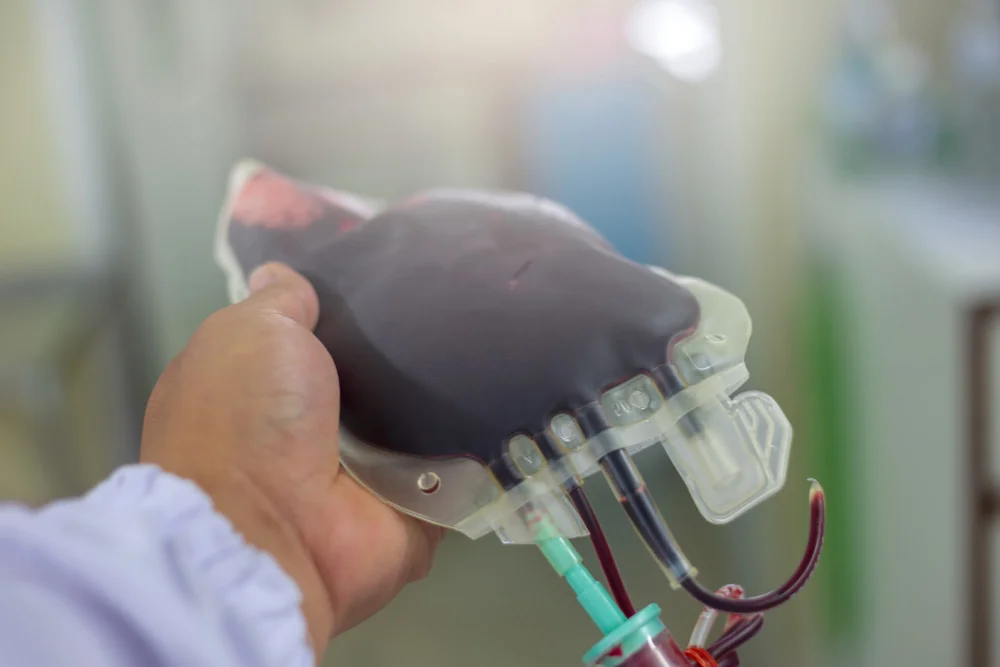Introduction
Anemia during pregnancy is a common condition that can have significant implications for both the mother and the developing baby. Understanding the causes, risks, and management strategies is essential for ensuring a healthy pregnancy.
Causes of Anemia During Pregnancy
Anemia during pregnancy can result from several factors that either increase the demand for or decrease the supply of essential nutrients required for red blood cell production. Understanding these causes is crucial for effective prevention and management. Here are the primary causes of anemia during pregnancy:
1. Iron-Deficiency Anemia
Iron-deficiency anemia is the most common type of anemia during pregnancy. It occurs when there is insufficient iron to produce hemoglobin, the protein in red blood cells that carries oxygen.
Causes:
- Increased Iron Demand: Pregnancy increases the body’s need for iron to support the growing fetus and placenta, as well as to increase the maternal blood volume.
- Inadequate Iron Intake: Poor dietary intake of iron-rich foods can lead to insufficient iron levels.
- Iron Absorption Issues: Conditions like celiac disease or inflammatory bowel disease can impair iron absorption.
- Blood Loss: Heavy menstrual periods before pregnancy or bleeding during pregnancy can deplete iron stores.
2. Folate-Deficiency Anemia
Folate (vitamin B9) is essential for the production of red blood cells. A deficiency can lead to anemia and increase the risk of neural tube defects in the developing baby.
Causes:
- Increased Folate Requirement: Pregnancy significantly increases the need for folate to support fetal growth and development.
- Inadequate Folate Intake: Not consuming enough folate-rich foods, such as leafy greens, fruits, and fortified cereals.
- Absorption Issues: Certain medical conditions and medications can interfere with folate absorption.
3. Vitamin B12 Deficiency Anemia
Vitamin B12 is crucial for red blood cell formation and neurological function. A deficiency can lead to anemia and potential neurological issues.
Causes:
- Dietary Deficiency: Insufficient intake of vitamin B12, which is primarily found in animal products like meat, dairy, and eggs.
- Absorption Issues: Conditions such as pernicious anemia, which affects the stomach’s ability to produce intrinsic factor necessary for B12 absorption, or gastrointestinal surgeries that impact absorption.
4. Hemolytic Anemia
Hemolytic anemia occurs when red blood cells are destroyed faster than they can be produced.
Causes:
- Autoimmune Disorders: Conditions like autoimmune hemolytic anemia where the body’s immune system attacks its own red blood cells.
- Inherited Disorders: Genetic conditions such as sickle cell anemia and thalassemia that affect red blood cell shape and function.
5. Aplastic Anemia
Aplastic anemia is a rare but serious condition where the bone marrow fails to produce enough blood cells, including red blood cells.
Causes:
- Autoimmune Disorders: The immune system attacks the bone marrow.
- Exposure to Toxins: Chemicals, radiation, and certain medications can damage bone marrow.
- Viral Infections: Some viral infections can affect bone marrow function.
6. Chronic Diseases
Chronic conditions can lead to anemia of chronic disease, where inflammation interferes with red blood cell production.
Causes:
- Kidney Disease: Reduced erythropoietin production, a hormone that stimulates red blood cell production.
- Chronic Infections or Inflammatory Diseases: Conditions like rheumatoid arthritis or chronic infections that cause persistent inflammation.
7. Blood Loss
Significant blood loss can deplete the body’s iron and red blood cell levels.
Causes:
- Bleeding Disorders: Conditions that cause excessive bleeding.
- Surgery or Trauma: Blood loss due to surgical procedures or injuries.
- Gastrointestinal Bleeding: Conditions like ulcers or hemorrhoids that cause blood loss.
Risk Factors
Several factors can increase the risk of developing anemia during pregnancy:
- Multiple Pregnancies: Carrying more than one baby increases iron and nutrient requirements.
- Short Interpregnancy Interval: Having pregnancies close together can deplete iron stores.
- Heavy Pre-Pregnancy Menstrual Blood Loss: Can lead to lower iron stores before conception.
- Inadequate Nutrition: Poor dietary intake of iron, folate, and vitamin B12.
- Chronic Conditions: Such as inflammatory bowel disease or celiac disease that affect nutrient absorption.
Symptoms
Common symptoms of anemia during pregnancy include:
- Fatigue and weakness
- Pale or yellowish skin
- Shortness of breath
- Dizziness or lightheadedness
- Rapid or irregular heartbeat
- Chest pain
Risks and Complications of Anemia During Pregnancy
Anemia during pregnancy can pose significant risks and complications for both the mother and the developing baby. Understanding these risks is crucial for timely diagnosis and effective management. Here are the primary risks and complications associated with anemia during pregnancy:
For the Mother
- Severe Fatigue and Weakness
- Anemia can cause extreme tiredness and weakness, making it difficult for pregnant women to carry out daily activities and increasing the risk of accidents and injuries.
- Increased Risk of Infections
- Anemia weakens the immune system, making the mother more susceptible to infections, which can further complicate the pregnancy.
- Heart Problems
- Severe anemia can cause the heart to work harder to pump blood, leading to heart-related complications such as an enlarged heart or heart failure.
- Preterm Labor
- Anemic mothers have a higher risk of preterm labor, which can lead to premature birth and associated complications for the baby.
- Postpartum Depression
- The physical strain and fatigue caused by anemia can increase the risk of postpartum depression.
- Excessive Blood Loss During Delivery
- Anemic women are more likely to experience significant blood loss during childbirth, increasing the need for blood transfusions and the risk of postpartum hemorrhage.
For the Baby
- Low Birth Weight
- Babies born to anemic mothers are at a higher risk of being underweight (weighing less than 5.5 pounds), which can lead to various health issues.
- Preterm Birth
- Anemia increases the likelihood of preterm birth (before 37 weeks of gestation), which can result in developmental delays and other complications for the baby.
- Developmental Delays
- Severe anemia in the mother can affect the baby’s brain development and cognitive function, leading to developmental delays and learning difficulties.
- Iron Deficiency
- Babies born to mothers with iron-deficiency anemia may have low iron stores at birth, making them more susceptible to anemia and related health issues.
- Increased Risk of Perinatal Mortality
- Severe anemia, particularly in the third trimester, is associated with a higher risk of stillbirth and neonatal death.
Long-Term Risks
- Cognitive and Behavioral Issues
- Children born to mothers with untreated severe anemia may face long-term cognitive and behavioral challenges.
- Chronic Health Issues
- Both the mother and the baby may be at increased risk of chronic health issues later in life due to the impacts of anemia during pregnancy.
Prevention and Mitigation Strategies
- Early Prenatal Care
- Regular prenatal visits can help in the early detection and management of anemia, reducing the risk of complications.
- Nutritional Supplements
- Prenatal vitamins containing iron, folate, and vitamin B12 are essential for preventing nutritional deficiencies that cause anemia.
- Dietary Modifications
- A balanced diet rich in iron, folate, and vitamin B12 can help maintain healthy red blood cell levels. Foods like lean meats, leafy greens, beans, and fortified cereals are beneficial.
- Monitoring and Treatment
- Regular blood tests to monitor hemoglobin levels and iron stores, along with appropriate treatment (oral or intravenous iron supplements, folic acid, vitamin B12 injections), can effectively manage anemia.
- Addressing Underlying Causes
- Treating underlying conditions that contribute to anemia, such as gastrointestinal disorders, infections, or chronic diseases, is crucial.
Diagnosis of Anemia During Pregnancy
Diagnosing anemia during pregnancy is essential to ensure timely and appropriate management, minimizing the risks and complications for both the mother and the developing baby. Here is a comprehensive overview of the diagnostic process for anemia during pregnancy:
1. Medical History and Physical Examination
Medical History:
- Detailed history of the patient’s dietary habits, menstrual history, prior pregnancies, and any underlying medical conditions.
- Inquiry about symptoms such as fatigue, weakness, shortness of breath, dizziness, and pale skin.
Physical Examination:
- Checking for physical signs of anemia, such as pallor of the skin, conjunctiva, and mucous membranes.
- Assessing heart rate and blood pressure to identify any cardiovascular strain.
2. Complete Blood Count (CBC)
A CBC is the primary blood test used to diagnose anemia. It includes:
- Hemoglobin (Hb): Measures the amount of hemoglobin in the blood. Low levels indicate anemia.
- Hematocrit (Hct): Percentage of red blood cells in the blood. Low levels suggest anemia.
- Red Blood Cell (RBC) Count: The number of red blood cells in a volume of blood. Low counts indicate anemia.
- Mean Corpuscular Volume (MCV): Indicates the size of red blood cells. Helps differentiate between types of anemia (microcytic, normocytic, macrocytic).
- Mean Corpuscular Hemoglobin (MCH): Average amount of hemoglobin per red blood cell.
- Mean Corpuscular Hemoglobin Concentration (MCHC): Average concentration of hemoglobin in red blood cells.
- Red Cell Distribution Width (RDW): Measures the variation in red blood cell size. Higher RDW can indicate mixed causes of anemia.
3. Iron Studies
To diagnose iron-deficiency anemia and assess iron status:
- Serum Iron: Measures the amount of iron in the blood.
- Ferritin: Reflects iron stores in the body. Low ferritin levels indicate depleted iron stores.
- Total Iron-Binding Capacity (TIBC): Indicates the maximum amount of iron that can be bound by proteins in the blood. High TIBC suggests iron deficiency.
- Transferrin Saturation: Percentage of transferrin (a protein that transports iron) that is saturated with iron. Low levels indicate iron deficiency.
4. Vitamin Levels
To diagnose vitamin B12 or folate deficiency:
- Serum Vitamin B12: Measures the level of vitamin B12 in the blood. Low levels indicate deficiency.
- Serum Folate: Measures the level of folate in the blood. Low levels indicate deficiency.
5. Reticulocyte Count
- Measures the number of young red blood cells (reticulocytes) in the blood.
- Helps determine if the bone marrow is producing red blood cells adequately.
6. Peripheral Blood Smear
- A drop of blood is examined under a microscope to evaluate the size, shape, and color of red blood cells.
- Can help identify specific types of anemia (e.g., microcytic anemia in iron deficiency, macrocytic anemia in vitamin B12 or folate deficiency).
7. Bone Marrow Examination
- In rare cases, a bone marrow biopsy may be performed to evaluate bone marrow function and identify conditions such as aplastic anemia or leukemia.
8. Additional Tests
Depending on the suspected underlying cause, additional tests may be performed:
- Celiac Disease Screening: To identify malabsorption issues.
- Liver and Kidney Function Tests: To assess organ function that can impact anemia.
- Inflammatory Markers: To identify anemia of chronic disease (e.g., C-reactive protein, erythrocyte sedimentation rate).
9. Prenatal Screening
- Routine prenatal screening includes blood tests to monitor hemoglobin and hematocrit levels at various stages of pregnancy.
- Helps in early detection and timely management of anemia.
Management and Treatment of Anemia During Pregnancy
Proper management and treatment of anemia during pregnancy are crucial to ensure the health and well-being of both the mother and the developing baby. The treatment approach depends on the type and severity of anemia, as well as the underlying cause. Here are the primary management and treatment strategies:
1. Iron-Deficiency Anemia
Dietary Changes:
- Increase intake of iron-rich foods such as lean meats, poultry, fish, beans, lentils, tofu, spinach, and fortified cereals.
- Include vitamin C-rich foods (e.g., citrus fruits, tomatoes, bell peppers) to enhance iron absorption.

Iron Supplements:
- Oral Iron Supplements: Commonly prescribed forms include ferrous sulfate, ferrous gluconate, and ferrous fumarate. These are usually taken on an empty stomach to improve absorption, but can be taken with food to reduce gastrointestinal side effects.
- Intravenous Iron: For women who cannot tolerate oral iron or have severe anemia, intravenous iron therapy may be administered.
Managing Side Effects:
- To minimize side effects like constipation, nausea, and stomach upset, iron supplements can be taken with meals, and stool softeners or laxatives can be used if necessary.
2. Folate-Deficiency Anemia
Dietary Changes:
- Increase intake of folate-rich foods such as leafy green vegetables, oranges, bananas, legumes, nuts, and fortified cereals.
Folic Acid Supplements:
- Daily folic acid supplements (usually 400-800 micrograms) are recommended for all pregnant women to prevent folate deficiency and reduce the risk of neural tube defects.
3. Vitamin B12 Deficiency Anemia
Dietary Changes:
- Increase intake of vitamin B12-rich foods such as meat, dairy products, eggs, and fortified cereals.
Vitamin B12 Supplements:
- Oral Vitamin B12: For mild deficiency, oral supplements or sublingual tablets may be effective.
- Vitamin B12 Injections: For severe deficiency or absorption issues, vitamin B12 injections may be necessary.
4. Hemolytic Anemia
Managing Underlying Causes:
- Treatment focuses on managing the underlying cause of hemolysis (e.g., autoimmune disorders, infections).
Medications:
- Corticosteroids or other immunosuppressive drugs may be prescribed for autoimmune hemolytic anemia.
Blood Transfusions:
- In severe cases, blood transfusions may be required to maintain adequate red blood cell levels.

5. Aplastic Anemia
Treating Underlying Causes:
- Addressing factors causing bone marrow suppression (e.g., medications, infections).
Medications:
- Immunosuppressive therapy or growth factors may be used to stimulate bone marrow production.
Blood Transfusions:
- To manage severe anemia, blood transfusions may be necessary.
Bone Marrow Transplant:
- In severe cases, a bone marrow transplant may be considered.
6. Anemia of Chronic Disease
Managing Chronic Conditions:
- Effective management of underlying chronic diseases (e.g., kidney disease, inflammatory conditions) is crucial.
Medications:
- Erythropoiesis-stimulating agents (ESAs) may be prescribed to stimulate red blood cell production.
7. General Management Strategies
Regular Monitoring:
- Routine prenatal visits with regular blood tests to monitor hemoglobin levels and overall health.
Hydration and Rest:
- Staying well-hydrated and getting adequate rest to support overall health and well-being.
Education and Support:
- Providing education on dietary modifications and supplement use.
- Offering support and counseling to address concerns and ensure adherence to treatment plans.
Prevention
Preventing anemia during pregnancy involves:
- Prenatal Vitamins: Taking prenatal vitamins that contain iron, folate, and vitamin B12.
- Balanced Diet: Eating a well-balanced diet rich in essential nutrients.
- Regular Check-Ups: Routine prenatal visits to monitor blood levels and overall health.
Conclusion
Anemia during pregnancy is a manageable condition with the right approach to nutrition, supplementation, and medical care. Early diagnosis and treatment are crucial to prevent complications and ensure the health and well-being of both the mother and baby. If you suspect you have anemia, consult your healthcare provider for appropriate evaluation and management.



